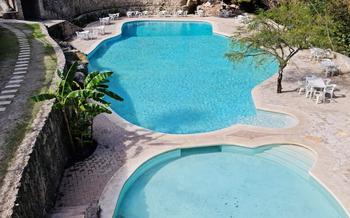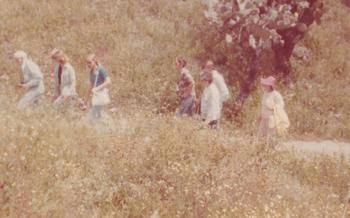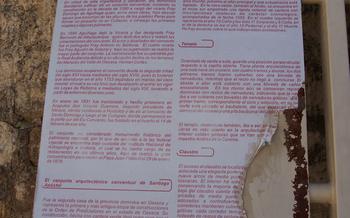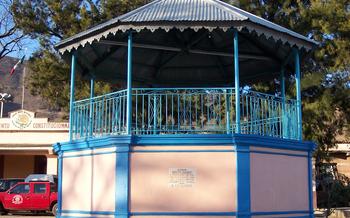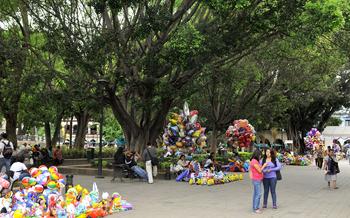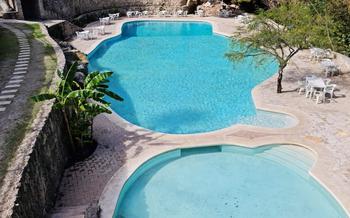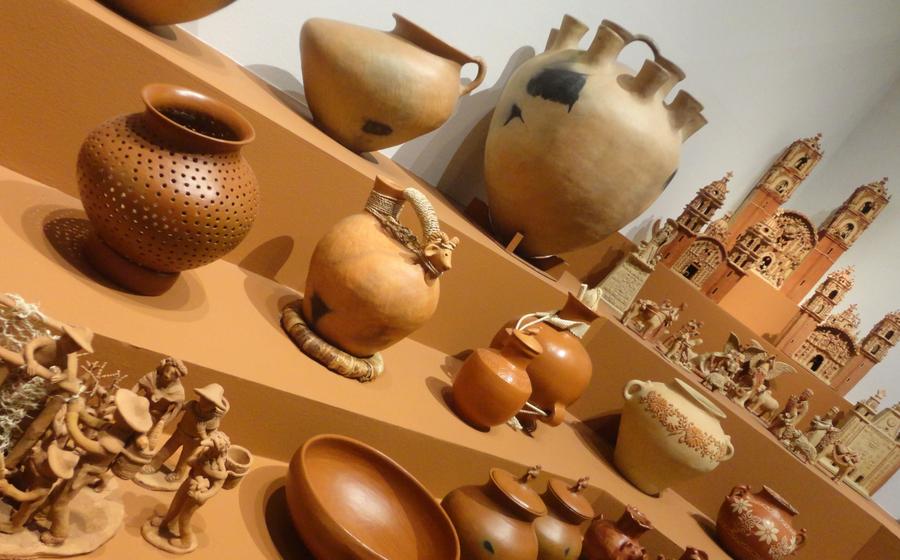
Santa María Tlahuitoltepec
- Santa María Tlahuitoltepec: A Zapotec Village in the Sierra Norte Mountains
- Zapotec Weaving and Textiles
- How to Identify Authentic Zapotec Textiles
- Cooking Classes and Traditional Zapotec Cuisine
- Zapotec Rituals and Ceremonies
- Zapotec Music and Dance
- Zapotec Art and Crafts
- Hiking and Nature Walks in the Sierra Norte Mountains
- Visiting Zapotec Markets
- Visiting Zapotec Ruins and Archaeological Sites
- Staying in a Traditional Zapotec Home
- Learning the Zapotec Language
- Volunteering in the Santa María Tlahuitoltepec Community
- Attending Zapotec Festivals and Celebrations
- Supporting Local Zapotec Businesses
- Insider Tip: Off-the-Beaten-Path Experiences
Santa María Tlahuitoltepec: A Zapotec Village in the Sierra Norte Mountains
Nestled amidst the picturesque Sierra Norte Mountains, Santa María Tlahuitoltepec stands as a vibrant and significant Zapotec village. This indigenous community, rich in history and culture, invites travelers to immerse themselves in the authentic and enduring traditions of the Zapotec people.
The Zapotecs, with their ancient lineage, have made indelible contributions to Oaxacan culture. Their ancestors, hailing from the Valley of Oaxaca, migrated to the Sierra Norte centuries ago, establishing thriving communities in the region's rugged terrain. Over time, they developed a unique way of life, characterized by distinctive language, customs, and artisanal practices.
Reaching Santa María Tlahuitoltepec requires a scenic journey through the winding mountain roads. Whether by private car or guided tour, the drive offers breathtaking vistas of the surrounding landscapes, dotted with verdant valleys and towering peaks. The village itself enchants visitors with its cobblestone streets, traditional adobe houses, and a central plaza that pulsates with the rhythm of daily life.
The best time to visit Santa María Tlahuitoltepec is during the dry season, which typically runs from November to April. During these months, the weather is pleasant and dry, providing ideal conditions for exploring the village and its surroundings. However, the village's charm and cultural offerings remain vibrant throughout the year, making it a worthwhile destination regardless of the season.
Zapotec Weaving and Textiles
The Zapotec people have a long and rich history of weaving, dating back to pre-Columbian times. Zapotec textiles are renowned for their vibrant colors, intricate patterns, and unique designs. Each piece is a true work of art, reflecting the creativity and skill of the Zapotec weavers.
Traditional Zapotec weaving techniques have been passed down from generation to generation, and many Zapotec women still weave using the same backstrap looms that their ancestors used centuries ago. These looms are simple devices that allow the weavers to create complex patterns and designs.
The Zapotec people use a variety of natural fibers to create their textiles, including cotton, wool, and silk. They also use natural dyes to achieve the vibrant colors that are characteristic of Zapotec textiles.
Zapotec textiles are an important part of the Zapotec culture and are used for a variety of purposes, including clothing, blankets, and wall hangings. They are also a popular tourist souvenir, and can be found in many shops and markets in Oaxaca.
How to Identify Authentic Zapotec Textiles
When shopping for Zapotec textiles, it is important to be able to identify authentic pieces. Here are a few tips:
- Look for the Zapotec seal of authenticity. This seal is a guarantee that the textile was made by a Zapotec weaver using traditional techniques.
- Examine the fabric closely. Authentic Zapotec textiles are usually made with high-quality fibers and have a smooth, even texture.
- Check the colors. The colors of authentic Zapotec textiles are usually vibrant and long-lasting.
- Be aware of the price. Authentic Zapotec textiles are usually more expensive than mass-produced imitations.
Cooking Classes and Traditional Zapotec Cuisine
The rich flavors and unique ingredients of Zapotec cuisine are a reflection of the cultural heritage and traditions of the Zapotec people. Traditional Zapotec dishes are a fusion of pre-Hispanic and colonial influences, showcasing a variety of flavors, textures, and cooking techniques.
One of the most popular Zapotec dishes is tlayudas, large, thin tortillas topped with beans, cheese, and Oaxacan salsa. Another must-try is mole negro, a complex and flavorful sauce made with dozens of ingredients, including chocolate and chili peppers. For a taste of traditional Zapotec street food, try memelas, small, thick tortillas topped with various fillings such as beans, cheese, and meat.
If you're interested in learning more about Zapotec cuisine, there are several cooking classes available in Santa María Tlahuitoltepec. These classes are a great way to immerse yourself in the culture and learn how to prepare traditional Zapotec dishes using fresh, local ingredients.
Here are some tips for cooking Zapotec food at home:
- Use fresh, locally sourced ingredients whenever possible.
- Don't be afraid to experiment with different flavors and combinations.
- Start with simple dishes and gradually work your way up to more complex ones.
- Be patient and take your time. Zapotec cooking often involves slow and careful preparation.
Zapotec Rituals and Ceremonies
The rich cultural traditions of the Zapotec people are deeply intertwined with a complex system of rituals and ceremonies. These sacred practices honor the Zapotec gods, celebrate the cycles of life, and bring the community together.
-
Importance of Rituals and Ceremonies: Zapotec rituals and ceremonies play a vital role in maintaining cultural identity, preserving ancient traditions, and strengthening community bonds. They offer opportunities for the Zapotec people to connect with their ancestors, seek guidance from the gods, and give thanks for the blessings in their lives.
-
Different Types of Zapotec Rituals: The Zapotec people observe a diverse range of rituals and ceremonies throughout the year. Some of the most significant rituals include weddings, baptisms, funerals, agricultural festivals, and religious celebrations. Each ritual has its own unique purpose, traditions, and symbolic elements.
-
When and Where to Witness Zapotec Rituals: To witness Zapotec rituals and ceremonies, it is important to be respectful of the local culture and customs. Visitors should inquire about upcoming events and seek permission to attend. Some rituals are open to the public, while others are private and reserved for community members only.
-
Etiquette for Attending Zapotec Rituals: When attending a Zapotec ritual or ceremony, it is important to be respectful and mindful of the sacredness of the event. Visitors should dress modestly, avoid talking or making noise during the ceremony, and follow any instructions given by the community leaders or elders.
Zapotec Music and Dance
The Zapotec people have a rich musical and dance tradition that dates back centuries. Their music is characterized by its unique sounds and rhythms, often featuring wind instruments such as flutes and trumpets, as well as percussion instruments like drums and rattles. Traditional Zapotec dances are equally captivating, with vibrant colors, intricate footwork, and graceful movements. These performances often tell stories or depict important events from Zapotec history and mythology.
To experience Zapotec music and dance firsthand, visit the town square or cultural center in Santa María Tlahuitoltepec, where performances are frequently held. You can also catch Zapotec musicians and dancers at local festivals and celebrations throughout the year. When attending these events, remember to be respectful and refrain from taking photos or videos without permission. Instead, immerse yourself in the moment and let the music and dance transport you to another time and place.
Zapotec Art and Crafts
Santa María Tlahuitoltepec is renowned for its vibrant Zapotec arts and crafts scene. Zapotec artisans create a wide range of traditional and contemporary pieces, including intricate textiles, colorful ceramics, hand-carved wooden figures, and delicate jewelry. Each piece is a testament to the skill and creativity of the Zapotec people.
In the village, you can visit workshops and galleries to see artisans at work and purchase unique souvenirs. The Zapotec Handicraft Market is a great place to find a variety of handmade goods, from traditional textiles to modern pottery.
For a more immersive experience, consider taking a Zapotec arts and crafts workshop. You can learn how to weave, embroider, or make pottery using traditional techniques. These workshops are a great way to connect with the local culture and create your own unique piece of Zapotec art.
When shopping for Zapotec arts and crafts, it's important to support local artisans. Look for pieces that are handmade and have a unique design. Avoid buying mass-produced items or souvenirs that are not made by Zapotec artisans. By supporting local businesses, you can help preserve Zapotec culture and traditions.
Hiking and Nature Walks in the Sierra Norte Mountains
The Sierra Norte Mountains, with their breathtaking landscapes and diverse ecosystems, offer a paradise for nature enthusiasts and hikers. Explore the numerous trails that wind through lush forests, past cascading waterfalls, and up to panoramic viewpoints. The most popular trails include the scenic Sendero del Río, which follows the course of a pristine river, and the challenging ascenso al Cerro Pelón, which rewards hikers with stunning views of the surrounding mountains. Guided hikes and tours are available for those who prefer a more structured experience, and local guides can share their knowledge of the region's flora, fauna, and cultural history.
Remember to pack sturdy hiking shoes, comfortable clothing, and plenty of water. The weather in the mountains can change quickly, so it's essential to be prepared for rain and cold temperatures. Also, be mindful of your impact on the environment and avoid disturbing the local wildlife. With its stunning scenery, diverse trails, and rich biodiversity, the Sierra Norte Mountains offer an unforgettable hiking experience for nature lovers and adventurers alike.
Visiting Zapotec Markets
Zapotec markets are a vibrant and colorful affair, offering a glimpse into the daily lives of the local people. The air is filled with the sounds of vendors hawking their wares, the smell of fresh tortillas cooking, and the chatter of shoppers bartering for the best prices.
In these markets, you'll find an array of local products and handicrafts, from fresh fruits and vegetables to handwoven textiles, pottery, and jewelry. It's the perfect place to pick up souvenirs and support local artisans.
Bargaining is expected and even encouraged at Zapotec markets. Don't be afraid to haggle with the vendors to get the best price. However, be respectful and remember that these are small business owners trying to make a living.
Visiting a Zapotec market is not just about shopping; it's also a cultural experience. You'll have the chance to interact with the local people, learn about their traditions, and get a taste of their everyday life.
Here are some tips for visiting Zapotec markets:
- Arrive early to avoid the crowds and get the best selection of products.
- Bring cash, as many vendors do not accept credit cards.
- Be prepared to bargain politely but firmly.
- Be respectful of the local customs and traditions.
- Take your time to browse and soak up the atmosphere.
Visiting a Zapotec market is a great way to support the local economy, experience the local culture, and find unique souvenirs to take home.
Visiting Zapotec Ruins and Archaeological Sites
The rich history of the Zapotec civilization is evident in the impressive ruins and archaeological sites scattered throughout the region. These ancient structures offer a glimpse into the engineering prowess and cultural heritage of the Zapotec people.
One of the most significant Zapotec sites near Santa María Tlahuitoltepec is Monte Albán, located about an hour's drive from the village. This ancient city was once the capital of the Zapotec empire and boasts well-preserved pyramids, plazas, and tombs. Its iconic facade and intricate carvings showcase the artistic skill of the Zapotecs.
Other notable Zapotec ruins in the area include Mitla, with its unique fretwork decorations and colorful murals, and Atzompa, famous for its large stone carvings and elaborate tombs. These sites provide a fascinating glimpse into the lives and customs of the ancient Zapotec people.
When visiting Zapotec ruins, it's essential to be respectful of the cultural significance of these sites. Refrain from touching or climbing on structures and adhere to any guidelines or restrictions in place for the preservation and protection of these ancient treasures.
Staying in a Traditional Zapotec Home
Santa María Tlahuitoltepec offers a unique opportunity to immerse yourself in Zapotec culture by staying in a traditional Zapotec home. Homestays and guesthouses are available in the village, allowing visitors to experience the daily life and customs of the Zapotec people firsthand.
Staying in a Zapotec home is a great way to learn about the local culture, history, and traditions. You'll have the chance to interact with Zapotec families, share meals, and participate in daily activities. Many homestays also offer cooking classes, weaving workshops, and guided tours of the village and surrounding area.
When staying in a Zapotec home, it's important to be respectful of the local customs and traditions. Be sure to ask permission before entering the home, removing your shoes, and taking photographs. It's also important to be mindful of noise and privacy, as Zapotec families typically live in close quarters.
If you're looking for an authentic and immersive cultural experience, staying in a traditional Zapotec home is a great option. It's a chance to connect with the local people, learn about their way of life, and create lasting memories.
Learning the Zapotec Language
The Zapotec language, known as Diidxazá, is a complex and beautiful language spoken by the Zapotec people of Oaxaca and surrounding states. It is one of the most widely spoken indigenous languages in Mexico and holds a significant place in the cultural heritage of the Zapotec community.
If you're interested in immersing yourself fully in Zapotec culture, learning the language can be an enriching and rewarding experience. Knowing basic Zapotec phrases and vocabulary will not only enhance your interactions with locals but also demonstrate your respect and appreciation for their traditions.
While there are no formal language schools in Santa María Tlahuitoltepec, several resources and opportunities are available to help you learn the language. You can find Zapotec language books, dictionaries, and audio resources online or in local bookstores. There are also community workshops and classes occasionally offered by local Zapotec speakers and organizations.
Remember that learning a new language takes time and patience. Don't be discouraged if you struggle with pronunciation or grammar at first. Embrace the learning process, engage in conversations with locals, and don't be afraid to make mistakes. Immerse yourself in the Zapotec language, and you'll be surprised at how much you can learn and the connections you can make with the Zapotec community.
Volunteering in the Santa María Tlahuitoltepec Community
Volunteering in Santa María Tlahuitoltepec is a rewarding experience that allows you to give back to the local community while immersing yourself in Zapotec culture. Several volunteer projects are available, such as teaching English, working on community development projects, and assisting with healthcare initiatives.
To get involved, contact local organizations or NGOs that work with the community. They can provide you with information about current volunteer opportunities and help you find a project that aligns with your skills and interests.
Volunteering in Santa María Tlahuitoltepec is a great way to make a positive impact on the community while learning about Zapotec culture and way of life. It's an enriching experience that will stay with you long after your trip.
Attending Zapotec Festivals and Celebrations
The Zapotec people celebrate various festivals and celebrations throughout the year, each honoring unique aspects of their culture and history. Attending these events offers a vibrant and immersive experience for visitors who want to witness the richness of Zapotec traditions.
One of the most important Zapotec festivals is the Guelaguetza, held annually in July. This festival showcases traditional Zapotec music, dance, and cuisine, with colorful parades, elaborate costumes, and lively performances. The Guelaguetza is a celebration of Zapotec identity and a chance for visitors to experience the diversity of Zapotec culture.
Another significant festival is the Day of the Dead, celebrated in November. During this festival, Zapotec families honor their deceased loved ones by creating altars adorned with candles, flowers, and offerings. Visitors can witness colorful processions, visit cemeteries, and enjoy traditional food and music during this time.
Zapotec communities also celebrate patron saint festivals throughout the year. These festivals feature religious processions, traditional dances, and music, offering a glimpse into the spiritual traditions of the Zapotec people.
To attend Zapotec festivals, visitors should plan their trip accordingly, as many festivals are held on specific dates. It's essential to be respectful and observe local customs and etiquette during these events. Visitors should dress appropriately, avoid taking photos without permission, and contribute to the festive atmosphere by participating in the activities and enjoying the performances.
Supporting Local Zapotec Businesses
Supporting local Zapotec businesses is vital for preserving the unique cultural heritage of Santa María Tlahuitoltepec. These businesses not only offer authentic products and services but also provide a significant source of income for the local community. By choosing to shop and dine at local establishments, you can directly contribute to the economic well-being of the Zapotec people.
Many local Zapotec businesses offer a wide range of products, including traditional textiles, handicrafts, artwork, and organic coffee. You can find everything from handwoven rugs and colorful blouses to intricately carved wooden masks and delicious locally grown chocolate. Supporting these businesses not only ensures that these traditional skills and practices are preserved but also helps to create a more sustainable and equitable economy.
To find local Zapotec businesses, look for signs in Spanish or Zapotec, or ask for recommendations from your hotel or tour guide. You can also visit the local market, where you'll find a variety of vendors selling fresh produce, handmade goods, and traditional snacks.
When bargaining, be respectful and offer a fair price. Remember that these businesses often operate on thin margins, and your purchase can make a big difference to their livelihood. By supporting local Zapotec businesses, you're not only getting a unique souvenir or a delicious meal, you're also making a positive impact on the community.
Insider Tip: Off-the-Beaten-Path Experiences
For adventurous travelers seeking unique and authentic experiences, Santa María Tlahuitoltepec offers a plethora of hidden gems and lesser-known places to explore. Venture off the beaten path to discover secret waterfalls, secluded mountain trails, and hidden caves that hold ancient Zapotec secrets.
Immerse yourself in the local culture by visiting traditional Zapotec markets, where you can barter for handmade crafts and savor delicious local delicacies. Explore the surrounding countryside, where you can encounter traditional Zapotec villages and learn about their unique customs and traditions.
To fully embrace the off-the-beaten-path experience, consider hiring a local guide who can lead you to hidden gems and share insights into the Zapotec culture. Remember to be respectful and mindful of local customs and traditions when venturing into these lesser-known places.
Here are some tips for exploring off-the-beaten-path destinations in Santa María Tlahuitoltepec:
- Ask locals for recommendations on hidden gems and lesser-known places to visit.
- Be prepared for adventure and embrace the unexpected.
- Pack comfortable shoes and clothing suitable for hiking and exploring.
- Bring a camera to capture the stunning landscapes and unique moments.
- Be respectful of the local culture and customs, and ask permission before entering private property.
By venturing off the beaten path, you'll discover the true essence of Santa María Tlahuitoltepec and create lasting memories of your journey into the heart of the Sierra Norte Mountains.

